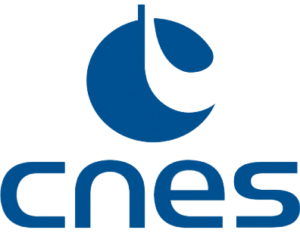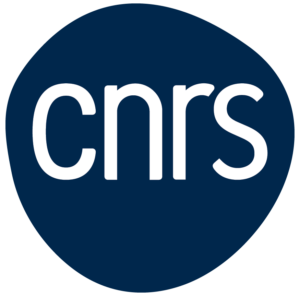Le CeSAM met à la disposition de la communauté scientifique des outils de traitement de données et de visualisation compatibles avec les standards de l’Observatoire Virtuel.
-
Visualisation de données
Glnemo2 is an interactive 3D visualization program which displays particles positions of the different components (gas, stars, disk, dark mater halo, bulge) of an N-body snapshot. It’s a very useful tool for everybody running N-body simulations from isolated galaxies to cosmological simulations. It can show quickly a lot of information about data by revealing shapes, dense areas, formation of structures such as spirals arms, bars, peanuts or clumps of galaxies. Glnemo2 has been designed to meet the requirements of the user, with simplicity in mind, easy to install, easy to use with an interactive and responsive graphical user interface (based on QT 5.X API) , powerful with a fast 3D engine (OPenGL and GLSL), and generic with the possibility to load different kinds of input files.
-
Observatoire virtuel
VO Team at LAM curently (2017) deploy new VO services based on DaCHS server.
-*ASPIC-VO : public spectroscopic surveys hosted at CeSAMRelated VO activities
ETC-42
This virtual Observatory compliant Exposure Time Calculator has been designed in order to facilitate the integration of new sites, instruments and sources by the user. It is no more instrument dedicated but is based on generic XML data for multi projects implementation (EUCLID, EELTs, OPTIMOS) covering a wide wavelength range (from NIR, to UV) -
Simulation
ETC-42
This virtual Observatory compliant Exposure Time Calculator has been designed
in order to facilitate the integration of new sites, instruments and sources by the user. It is no more instrument dedicated but is based on generic XML data for multi projects
implementation (EUCLID, EELTs, OPTIMOS) covering a wide wavelength range (from NIR, to UV)LENSTOOL
Lenstool is a gravitational lensing software for modeling mass distribution of galaxies and clusters (strong and weak regime).UNSIO
UNSIO ( U niversal N body S napshot I nput O utput) is an API which perform input/output operations in a generic way, and on different kind of nbody simulation files format (Gadget / Ramses / Nemo ). By using this API (from python / C++ / Fortran ), a user could write only one analysis program which will work on all known files format supported by UNSIO. It’s not necessary anymore to know how is implemented a file format, UNSIO will do transparently and automatically all the hard work for you ! With UNSIO, you will spend less time to develop your analysis program. UNSIO comes with an integrated sqlite3 database which can be used to retrieve automatically all your data among terabytes of hard disks. -
Outils génériques de traitement de données
AITAS : système d’archivage et d’indexation de données de test et d’intégration d’instruments(AIT)
AITAS :The aim of AITAS is to automatically archive and index data acquired from an instrument during test and validation phase. AITAS product has been built initially to full the needs of the IRDIS-SPHERE (ESO-VLT) project to archive and organise data during the test phase. We have developed robust and secure tools to retrieve data from the acquisition workstation, build an archive and index data by keywords to provide search functionality among large amount of data. This import of data is done automatically after setting some conguration le. In addition APIs and GUI client have been developed in order to retrieve data from a generic interface and use them in test processing phase. The end user is able to select data and retrieve using any criteria listed in the metadata. One main advantage of this system is that it is intrinsically generic so that it can be used in instrument project in astrophysical laboratories without any further modicationsCigale
CIGALE means Code Investigating GALaxy Emission. The code has been developed to study the evolution of galaxies by comparing modelled galaxy spectral energy distributions (SEDs) to observed ones from the far ultraviolet to the far infrared.LePhare
Le PHARE is a set of fortran commands to compute photometric redshifts and to perform SED fitting. The last version includes new features with FIR fitting and a more complete treatment of physical parameters and uncertainties based on PEGASE and Bruzual & Charlot population synthesis modelsLensTools
A gravitational lensing software for modeling mass distribution of galaxies and clusters (strong and weak regime).PerlTools : Outils de traitements de fichiers FITS ( tables et images )
fstream.pl : The fstream tool is a FITS image truncating tool without using any library.
fits2fits.pl : The fits2fits program is a small tools to the modify a fits file.
saturation.pl : The saturation program is a small tools to the treatment of flags in SLOAN Catalogs.
subfits.pl : The subfits program make a cutout of a larger fits image using WCS.
cutlist.pl : The cutlist program is an extension of the sublist program to a list of coordinate. It access a list file to search in the Galex Database all sub-image to get.
fcifits.pl and fci.pl : The fcifits read a definition file to cross-idenfiate 2 fits catalog and produce a fits file. fci is as fcifits but produce a csv catalog (usable in a spreadsheet program).
fuvs.pl : fuvs produces a fits file containing the first next source in a catalog.
to_ds9ell.pl : create DS9 region files from a fits Catalog with the possibility to produce ellipse.
to_ascii.pl : produce a text file from a fits catalog with the selected columns.
to_fits.pl : produce a fits from a specialy formatted ascii fits.




